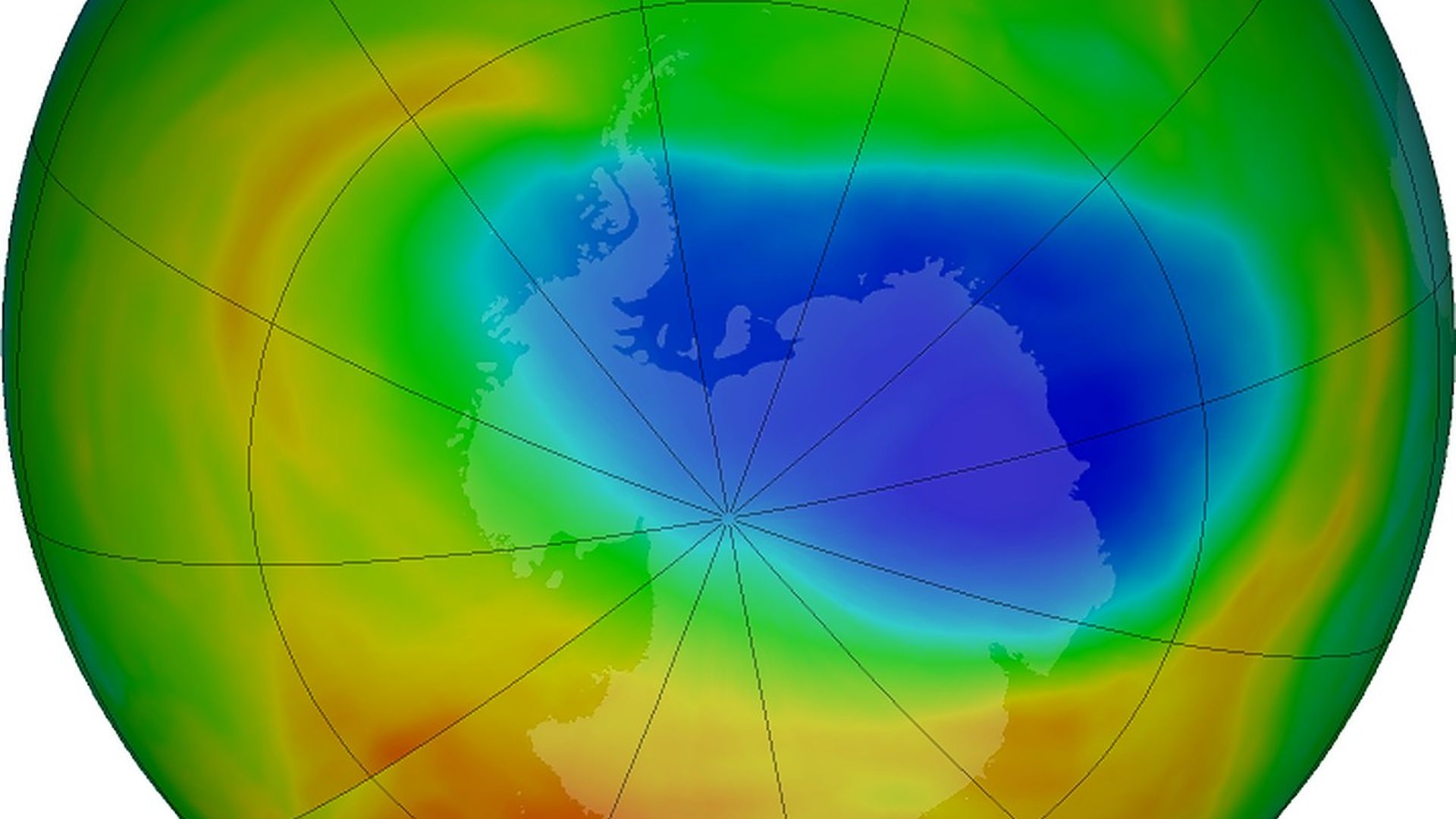
The hole in the ozone layer over Antarctica has shrunk to the smallest size since it was discovered by scientists in the 1980s, NASA said in a statement this week.
Yes, but: "It’s not a sign that atmospheric ozone is suddenly on a fast track to recovery," said Paul Newman, chief scientist for Earth Sciences at NASA's Goddard Space Flight Center in Greenbelt, Maryland, in the statement. It's important to recognize that what "we’re seeing this year is is due to warmer stratospheric temperatures," he said.
The big picture: Scientists from NASA and NOAA who monitor the hole in the ozone are still trying to understand the rare shrinkage event that they believe is weather-related, according to Susan Strahan, an atmospheric scientist with Universities Space Research Association, who works at NASA Goddard.
- "If the warming hadn’t happened, we’d likely be looking at a much more typical ozone hole," Strahan said in the statement.
- This is the third time in the past 40 years that weather systems have caused warm temperatures that limit ozone depletion, Strahan said. In September 1988 and 2002, similar weather patterns produced atypically small ozone holes, she said.
By the numbers: NASA and NOAA satellite measurements show the annual ozone hole reached its peak extent of 6.3 million square miles on Sept. 8, and then shrank to less than 3.9 million square miles for the rest of the month through October.
"During years with normal weather conditions, the ozone hole typically grows to a maximum area of about 8 million square miles in late September or early October."— NASA statement
But, but, but: There is still reason to cheer at the news. NASA scientist Paul Newman told AP it means there's more ozone covering the Southern Hemisphere and "less ultraviolet radiation at the surface."
- NASA says the 1987 treaty the Montreal Protocol on Substances that Deplete the Ozone Layer, signed by almost 200 countries to regulate the consumption and production of ozone-depleting compounds, is also starting to have a positive impact.
- The ozone hole over Antarctica is expected to gradually become less severe as chlorofluorocarbons (CFCs), which used to be found in refrigerators and aerosols but were banned under the protocol, are declining. "Scientists expect the Antarctic ozone to recover back to the 1980 level around 2070," NASA said.
Go deeper: Chinese factories are using banned ozone-depleting chemicals
Bagikan Berita Ini















0 Response to "NASA: Ozone layer hole shrinks to smallest size since discovery - Axios"
Post a Comment